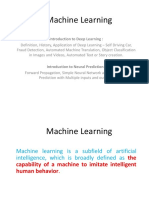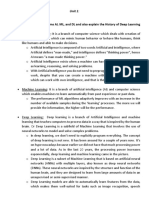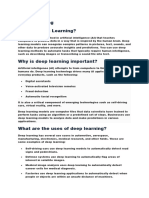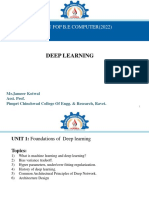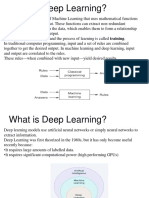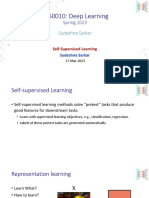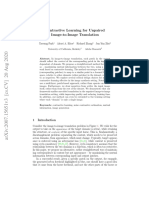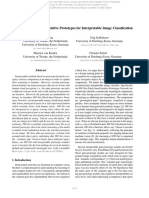0% found this document useful (0 votes)
10 views14 pagesIntroduction To Deep Learning
The document outlines an agenda for a deep learning presentation, covering topics such as the introduction to deep learning, key components, how it works, and its applications. It explains the differences between deep learning and traditional machine learning, the reasons for its current popularity, and various neural network types. Additionally, it provides a brief history of deep learning and highlights its applications in fields like computer vision, natural language processing, and healthcare.
Uploaded by
hccdauser162Copyright
© © All Rights Reserved
We take content rights seriously. If you suspect this is your content, claim it here.
Available Formats
Download as PPTX, PDF, TXT or read online on Scribd
0% found this document useful (0 votes)
10 views14 pagesIntroduction To Deep Learning
The document outlines an agenda for a deep learning presentation, covering topics such as the introduction to deep learning, key components, how it works, and its applications. It explains the differences between deep learning and traditional machine learning, the reasons for its current popularity, and various neural network types. Additionally, it provides a brief history of deep learning and highlights its applications in fields like computer vision, natural language processing, and healthcare.
Uploaded by
hccdauser162Copyright
© © All Rights Reserved
We take content rights seriously. If you suspect this is your content, claim it here.
Available Formats
Download as PPTX, PDF, TXT or read online on Scribd
/ 14















